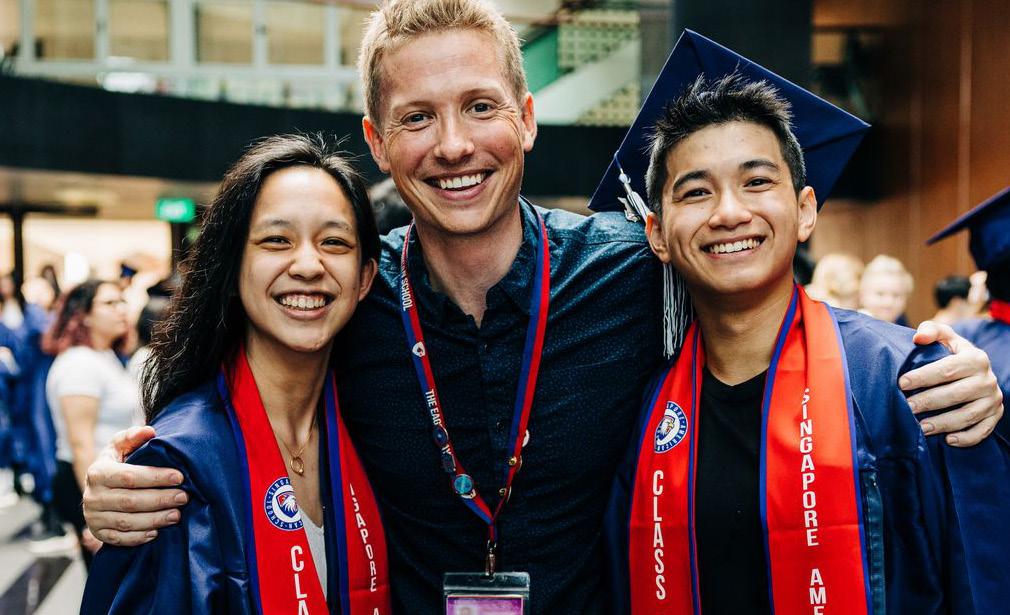
15 minute read
PTA STORE AND CAFE
AT SINGAPORE AMERICAN SCHOOL OUR EDUCATORS ARE DEEPLY IMPORTANT TO US, BECAUSE THEIR WORK IS AT THE HEART OF OUR MISSION.
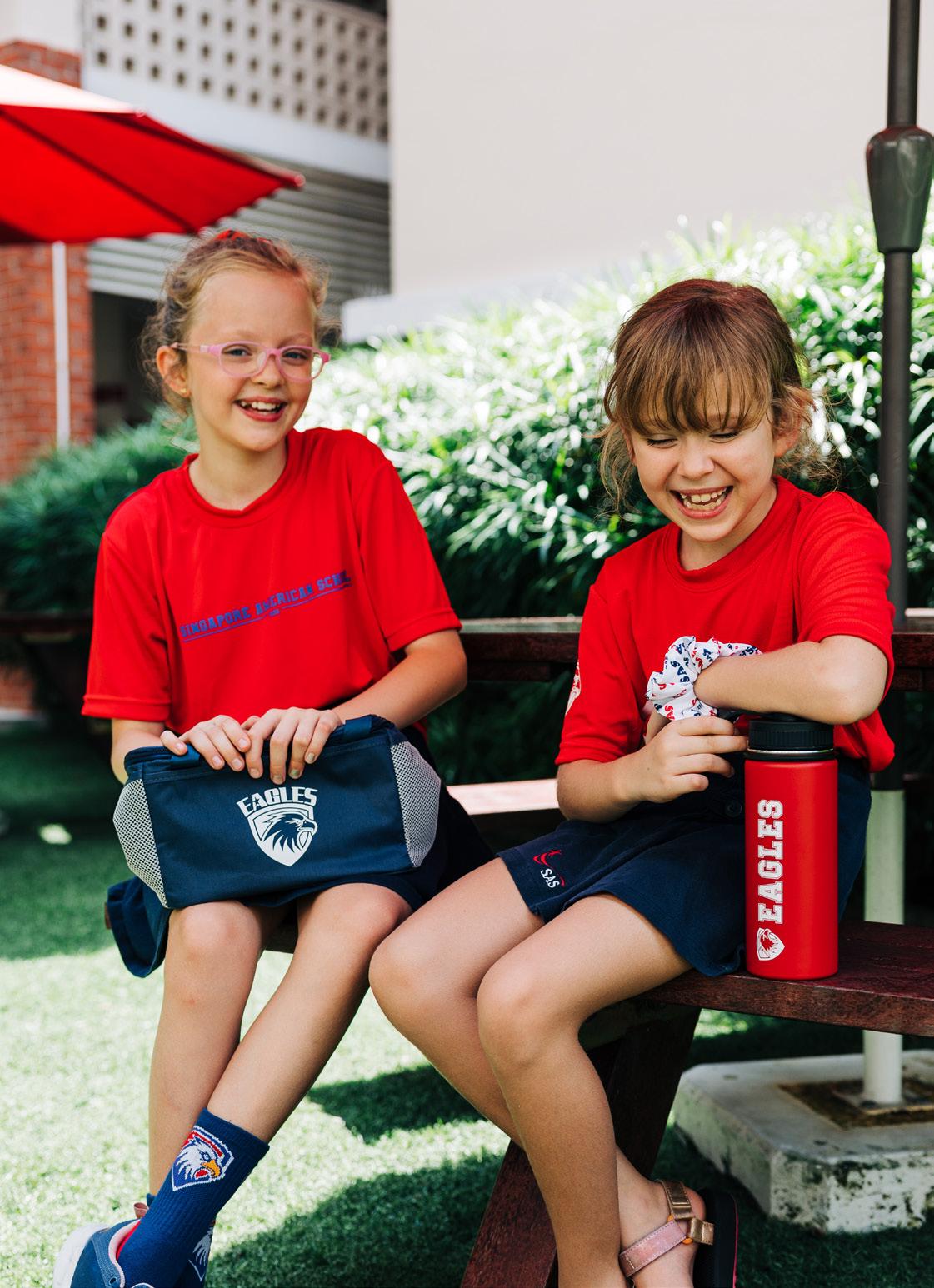
THEY CONSISTENTLY PROVIDE EXCEPTIONAL CARE AND EDUCATIONAL OPPORTUNITIES FOR THEIR STUDENTS, AND SO THEY DESERVE OUR DEEPEST GRATITUDE.
Thank you for inspiring me so early to pursue my interest in design and architecture. It most certainly motivated me to complete my engineering degree, and allowed me the very unique opportunity to contribute to the next evolution of SAS, after having vicariously experienced the design of the Woodlands campus back in the early 90's. I am so fortunate to have had inspirational teachers like you to set me on a course for success.
http://sasptastore.myshopify.com/
Thank you for being a great inspiration for our daughter. Your sharp insights of the kids' characters and your ability to motivate, engage, and connect with them at a very deep level is a gift that you should be proud of. We are forever grateful for your impact on our daughter and for all you do.
Thank you for making our son’s first year at SAS a great one. We were a bit worried at the beginning as this is his first big school, but from the first day, he always came back home smiling. He is learning so much in class in all subjects, and looks forward to going to school every day. This makes us so happy! We can see from the pictures how happy all the children are to be in your class, so thank you for being such a great teacher in their learning journey.
Make a Gift
YOUR GIFT LETS OUR EDUCATORS KNOW YOU CARE AND ENABLES THE SCHOOL TO SUPPORT INCREDIBLE LEARNING OPPORTUNITIES FOR OUR STUDENTS.
*The advancement office will notify honorees and include your personal note. The amount of your donation will not be shared with the honoree.
ByDIDI HARI CommunicationsKRISHNANWriter
The formation of the elementary school STEAM team this year brought some enhanced learning experiences for students across all grade levels. Learn more about the team’s mission and how SAS is providing our students from kindergarten through fifth grade with high-quality science education to prepare them for the present and the future!
Singapore American School continues to provide students with a learning environment that aligns with our vision of cultivating exceptional thinkers who are prepared for the future. Given the intricate world in which we live, it is now more imperative than ever that schools create dynamic and relevant learning environments that will help students thrive in their future academic, professional, and personal lives.
The STEAM disciplines include science, technology, engineering, art, and math, and together they provide learning opportunities that both excite and challenge our learners. STEAM classes ignite children’s curiosity, fuel their imagination, nurture their love for learning, and foster the skills for discovery and innovation— providing our elementary school students with a holistic understanding of their environment and their role in it.
How did we get here?
The STEAM team has been a work in progress for the past four years. It all started when SAS began implementing the Next Generation Science Standards (NGSS), which highlight the importance of including engineering in the curriculum.
Elementary School Deputy Principal Susan Shaw shares, “At the time, we had a science program in place, but it was taught in two separate labs. The students saw science as a separate element from their other core subjects, which was not our desired outcome. We knew we needed to shift away from this model and instead integrate science into our daily school work.”
What are Next Generation Science Standards (NGSS)?
The Next Generation Science Standards (NGSS) are kindergarten through twelfth grade science content standards designed to provide students with an in-depth understanding of science and engineering concepts, as well as the skills they need to apply that knowledge to real-world problems. The standards are organized around three dimensions: crosscutting concepts, science and engineering practices, and disciplinary core ideas.
How did we begin this journey?
In order to integrate science into the curriculum, we upskilled our teachers, ensured that science was taught beyond the confinement of science labs, and made a significant shift in how teachers approached science education. Shaw adds, “After much discussion, we decided on a model where we would gradually roll out how we would teach science in the classroom. Our science teachers collaborated with grade-level teachers to ensure that science was integrated into the daily curriculum. This approach allowed for a more cohesive approach to teaching science and engineering, creating a more integrated STEAM program across the school.”
Meet the STEAM team in elementary school:
• Keith Ferrell
• Kelli Buxton
• David Lee
• Shaun Kirkwood
What is the team’s mission?
All elementary school students will apply SAS’s learning aspirations by engaging in authentic and purposeful STEAM learning experiences (engineering, maker, and coding/robotics) including integration with core subjects.
What does the work of the STEAM team entail?

Curriculum design
Develop and improve standards-based curricular units and lessons that integrate science, technology (coding and robotics engineering), engineering, art, and/or math.
Teaching and Co-Teaching
Implement and deliver high-quality, engaging, hands-on STEAM experiences that push the boundaries of students’ learning and encourage them to think critically and come up with their own solutions to real-world problems.
Coaching and Consulting



Share expertise, collaborate, and provide feedback and support on instructional practices, as well as reflect on teaching experiences in order to improve student learning.
Professional Learning
Provide ongoing and intentional professional growth opportunities for educators to develop STEAM-integration knowledge, skills, and teaching approaches that positively impact student learning.
How is the STEAM team implementing their work in elementary school?
Kindergarten: Coding and Robotics Integrated into Math
Driving question: How might learning how to program a robot make me a stronger mathematician?
Bee-Bot robots provide a hands-on learning experience for kindergarten students, allowing them to physically manipulate and interact with the robot to solve math problems—enhancing their problemsolving skills, spatial awareness, and number sense, as well as their collaboration and communication skills. Programming the robots involves creating a sequence of commands to guide the robot through a maze or along a specific path. To program a BeeBot, students need to understand and use concepts such as left, right, forward, and backward to program the robot's movement accurately—reinforcing their understanding of number quantities and operations. Programming requires students to use critical thinking and problem-solving skills to plan and execute their instructions—developing their ability to analyze, strategize, and troubleshoot.
"I like using Bee-Bots because they are so cute and fun to play with! And when we use them to learn about math, we get to make them go different directions and count how many steps they take. It's like we're teaching the Bee-Bots how to do math too!"
—Jack
Integrating coding and robotics into math helps reinforce basic math concepts such as counting, addition, and subtraction—building a solid foundation for more advanced math skills in the future.
Second Grade: Biodiversity
Driving question: How might we make our second grade garden ecosystem more diverse?
Students begin addressing this real-world and age-appropriate problem by observing and asking questions about the second grade gardens along the hallways and then expanding their exploration to various ecosystems on campus, such as the school’s eco-garden and rainforest.
Students collect data on the biodiversity of each ecosystem and compare the different plants and animals that inhabit them. They conduct investigations to identify the essential needs of plants for survival, while also learning about the interdependence between plants and animals through seed dispersal and pollination.
With their newfound knowledge, students design proposals to improve the diversity of their gardens, using sketches and plans that incorporate their scientific explorations and investigations. Finally, students share their proposals with their peers in the form of small group panels that decide on the best solution.
Third Grade: Designing and Prototyping


Driving question: How might we design recess spaces and structures for the new campus upgrade?
As part of the ongoing campus upgrade, students are given the exciting opportunity to design innovative new recess spaces and structures. Working with Isaac Williams, lead architect for SAS Reimagined, the students are tasked with generating fresh ideas to help his team create an engaging and dynamic playground. After visiting recess spaces and making observations, students asked questions about energy, specifically concepts on forces and interactions. They used this understanding to design their recess structures. In addition, students created carnival rides by programming motors.
Drawing on this newfound understanding, the students then head to the makerspace to create a prototype.
Fifth Grade: Properties of Matter
Driving question: How might we create our own natural cleaning products?
Students begin the process by asking questions and investigating the properties of matter. Using this knowledge, they have an opportunity to investigate the properties of several natural ingredients that are commonly used in cleaning products.

Students then have time to consider how they might design and create their natural cleaning product. This includes making and testing their cleaning solution, gathering data, and adjusting their formula to improve their cleaning solution’s effectiveness. This is an engaging way to help students develop science skills and understanding through a practical and hands-on activity that allows for student creativity and choice.
What’s next?
• Continuing to create a curriculum for SAS’s Makerspaces and ensuring there are dedicated Makerspace areas closer to the art suite (coming soon at the new campus)
• More opportunities for cross-pollination of STEAM disciplines within the classrooms


• Ensuring every child has exceptional experiences that may spark an interest in future STEAM endeavors
The STEAM team has become an essential part of our school's curriculum, and we are proud of the progress we have made over the past four years. Students now have a better understanding of how science, technology, engineering, art, and math are interconnected, and they are better equipped to apply these concepts to real-world situations. The development of the elementary school STEAM program has brought about positive changes in our school's culture, encouraging collaboration and creativity among students and teachers alike. The curriculum's greatest impact is its promotion of inclusivity by expanding the boundaries of scientific knowledge to encompass everyone. This fosters meaningful connections between knowledge and responsibility, the real world and society, and ultimately between preserving the natural world and advancing human progress. We look forward to continuing to advance and improve our STEAM program in the years to come.

By DIDI HARI KRISHNAN Communications Writer
Giving students a voice and involving them in decision-making processes helps create a sense of belonging for students within the larger school community. From providing opportunities for leadership development through peer council to fostering a sense of ownership and empowerment through our interdisciplinary unit on power and advocacy, opportunities for our students to share their voice are an integral part of our program in the middle school at Singapore American School.
Student Advocacy: How One Middle School Student Empowers Students to Make a Difference
At SAS, students are not only given the opportunity to learn but also to take ownership of their education and make a positive impact on their community. One student exemplified this by identifying an issue that was affecting his classmates: insufficient break time. Eighth grade student Aarav approached the issue by first framing the problem and then seeking workable solutions. This process involved interviewing teachers and students to gauge their perspectives on the issue.
With the support and guidance of middle school counselor Ben Robertaccio, Aarav worked to develop a plan to increase break time. He shares, “I reached a simple conclusion of taking two minutes out of each core class and adding to break time. Then, I proceeded to email Mr. Beingessner the proposed schedule changes I wanted to implement.” His efforts did not go unnoticed as Middle School
Principal Chris Beingessner agreed to make the changes if Aarav could show widespread support for his plan, and continued to make adjustments to ensure that the plan met necessary middle school criteria.
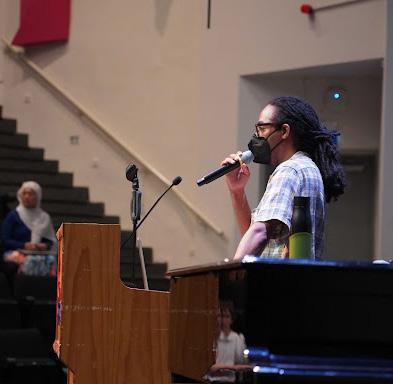
Aarav then collaborated with the middle school student union to bring about a collective victory, which extended break time and made a positive impact on many middle school students. This effective change demonstrated the middle school’s commitment to work with students, encourage them to take on leadership roles, and empower them to advocate for themselves and their community.
Harm Report in Middle School
The middle school harm report has gained significant attention as a powerful tool for student advocacy. This online form offers a safe space for students to voice their concerns and help shape the school environment they desire. Many students may feel uneasy about approaching teachers or principals with their concerns, but the harm report's anonymity feature encourages students to step forward and seek support. Providing a confidential platform for students to share their concerns, the harm report has become a vital instrument for promoting dialogue and effecting positive change in middle school. Students now have a safe way to get help.
Interdisciplinary Unit: Power and Advocacy
Last semester, SAS’s seventh grade students worked on an interdisciplinary unit exploring the concepts of power and advocacy. As part of this unit, students focused on the question, "How might students argue for change to the SAS school leaders, in order to advocate for their community?" Through lessons conducted over several days, students researched issues, gathered evidence to support their arguments, and created presentations on proposed changes they would like to see at SAS. Selected groups were then invited to present to an audience in a more formal setting.
Here are some questions our students explored:
• Does the school do enough to stop bullying?
• How could the “Grab n Go” food options be more diverse and inclusive?
• Is there gender bias present through SAS’s dress code?
• How could the Booster Booth be accessible to middle school students?
To help students prepare for their presentations, educators incorporated various activities and discussions into their lessons, including role-playing exercises, debates, and small group discussions.
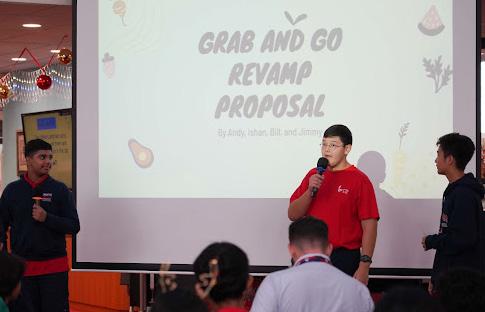
“At the beginning of this experience, with the help of Middle School Deputy Principal, Dr. Darnell Fine, we engaged the students in a provocation designed to help them imagine a world where they had even less control over their school lives than they currently do. By eliciting an emotional response to the draconian rules, our goal was to give students the opportunity to draw upon concepts such as power, advocacy, and accountability—which they had been studying previously—as a way to take back control of their daily experience at SAS.”
—Lucas Smith, seventh grade teacher
These are some timely and important topics for students to consider, as they push them to think critically about issues that matter to them and learn how to advocate for change effectively. By learning to make a strong argument, students can become more confident and effective advocates for the causes they care strongly about.
Subsequently, six groups of students from the 7B learning community had the opportunity to present their proposals to administrators, educators, and their peers during a culminating event in the middle school library. This was an exciting opportunity for students to have their voices heard and to make a real impact on their school community. The process also provided middle school principals the opportunity to consider the proposals put forward by the students, which may lead to further discussion and even school changes.
This unit not only helps them develop essential skills such as critical thinking and communication, but it also allows students to learn how they can effectively use their voices to bring about positive change that benefits their peers and the SAS community.
Giving students a voice is crucial to creating a more inclusive, safe, and responsive school environment. At SAS, educators are making strides in this direction, empowering middle school students to become leaders in their community through their work in classes. By fostering a culture of empowerment and collaboration, SAS is creating a community of engaged learners who are passionate about making a positive impact on their school and the world around them, and who have the tools to do so.
Singapore American School’s first Interim Semester included around 35 course options ranging from on-campus intensives to regional trips via local buses, trains, and cargo steamers. Since then, Interim Semester has developed, expanded, and become a treasured opportunity for generations of high school students.
By CARA D'AVANZO AND KINJAL SHAH Communications Writers
This year, SAS celebrates a momentous milestone as it marks 50 years of the all-time favorite Interim Semester program. Throughout its rich history, the Interim Semester program, or Interim, as it is fondly known, has become an integral part of the school's educational experience, offering students unique opportunities for experiential learning and personal growth. For the past five decades, it has provided students with a break from their regular academic routine, allowing them to engage in immersive andhands-on learning experiences outside the traditional classroom setting. The program's success can be attributed to its ability to combine academics with real-world experiences, fostering curiosity, independence, and a love for lifelong learning.
Fifty years ago, the first Interim Semester took place from January 26 to February 5, 1973. Small groups of high school students and teachers explored a challenge, theme, or place during an “Interim Semester” between the first and second terms. Some explored Singapore, others went to Malaysia or Indonesia, while others attended intensive classes on the SAS King’s Road campus.
The program has come a long way since the spring of 1973. High school students and their teachers continue to explore local and international locations across the globe. Like so many before them, they enjoy a parent-free week of new knowledge, new skills, new friends, and new insights into themselves and the world around them. Whether it is volunteering in local communities, conducting scientific research in pristine ecosystems, or engaging in servicelearning projects, Interim Semester continues to foster personal growth, leadership skills, and a sense of global citizenship among students.
Covid-19 hit Singapore just as Interim Semester 2020 was in its final stages of preparation, and was reluctantly canceled due to government restrictions on gatherings and travel. In 2021 and 2022, educators worked within the restrictions to offer Singapore-based day trips. While students mourned the loss of opportunities they had eagerly anticipated, they bowed to reality, chose from over 60 on-island course options, and learned more about their adopted home, their peers, and themselves during the week.
In February this year, 1,216 high school students and 127 teachers traveled over 7 million kilometers across 10 countries as part of 50 Interim Semester courses. After four years without overseas trips, this was a wonderful way to celebrate the Interim Semester program’s 50th anniversary at SAS! The generosity of our alumni donors during Alumni Giving Days, as well as the contributions of our educators, made it possible for students to enjoy a variety of perspectives, life-changing moments, and skills, and soak up different cultures, people, and places as part of the Interim Semester program at SAS.
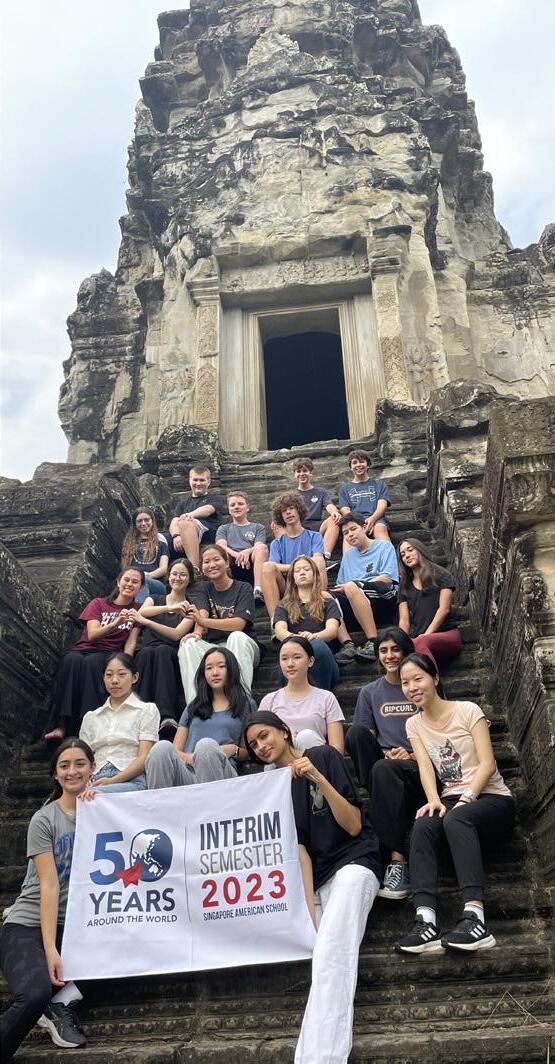
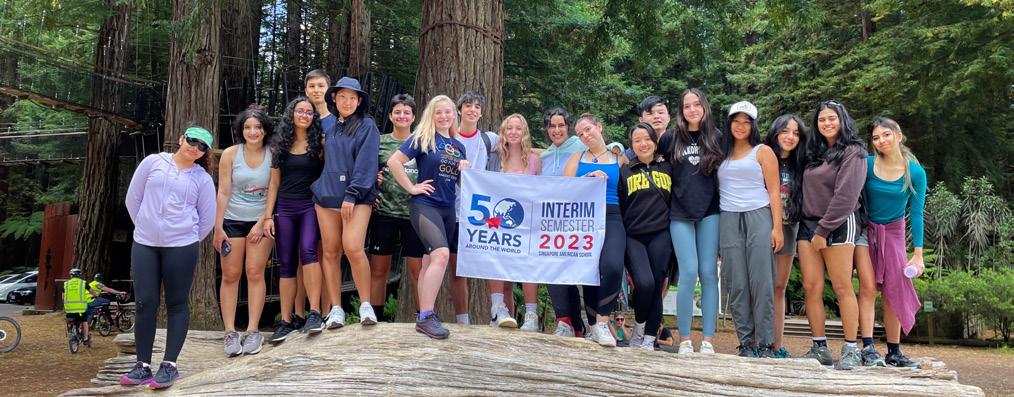

“I was able to go to Java, Indonesia this year on a four-day glamping trip in a Javanese rainforest. This was something I really wanted to do as camping and hiking was something my family used to do at least once a year before we moved to Singapore. Being able to go to Java was really special, as it allowed me to do something I’d been missing for the past few years. Thanks to Diego, our tour guide and a biologist who has traveled the world doing field work in untouched rainforests, I was able to learn more about the environment. It also gave me the opportunity to try and help restore the Javanese rainforest by planting native trees which have become endangered due to human impact. Overall this trip was a wonderful learning opportunity as well as a great chance to meet new people and make new friends.”
—Carissa Gartman, Class of 2023
“I had the opportunity to explore South Korean culture, history, and traditions, from visiting the palace to trying new foods and participating in a traditional tea ceremony. These experiences have broadened my perspective and given me a greater appreciation for the richness and complexity of South Korean culture. Furthermore, this trip has had a profound impact on me personally. It has helped me to develop a greater sense of independence and confidence as I navigated a new environment and interacted with people from different backgrounds. It has also inspired me to continue to explore new cultures and learn about the world around me.”
—Val
Breen, Class of 2023
“
Moments on my trip like doing a four-hour long kayak trip and exploring the beautiful coral are something I will never forget. Not only this but the service aspect of the trip will also sit in a special place in my heart. We planted a variety of coral in the ocean helping out the environment. I really cherish learning about why it is important to plant coral and the importance of mangroves. Doing my part for the environment and planting corals to protect fish from things like storms was especially heartwarming.”
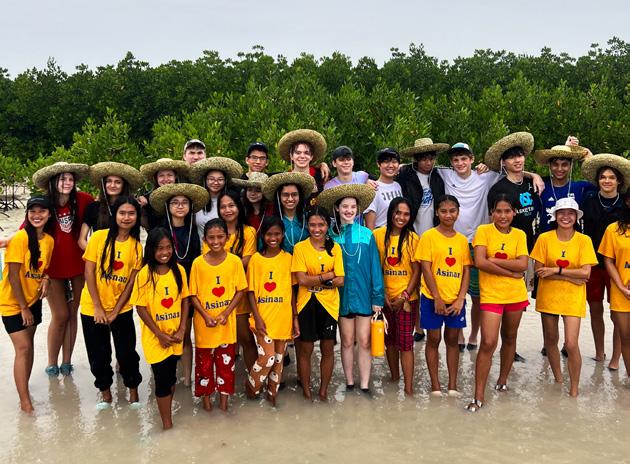

—Oscar Leipold, eleventh grade
“ Spending a week in Victoria, Australia was simply incredible. It’s difficult for me to piece together all the stunning sights, wonderful people, and memorable experiences that I will hold onto for a lifetime. From the insane views from the cliffs of Cape Woolamai, and exploring the vibrant city that is Melbourne, to the once-in-alifetime experience of swimming with wild dolphins and fur seals, nothing can compare to how fun, immersive, and wonderful this trip was. I am still in awe of how much I’ve learned over seven days: the multicultural history of Melbourne and Australia, the vulnerability of wildlife and our obligation to preserve it, and how beautiful nature can be. The combination of all these valuable experiences has culminated in me growing immensely as a person, and I will be forever grateful to have taken part in this opportunity.”
—Marc

